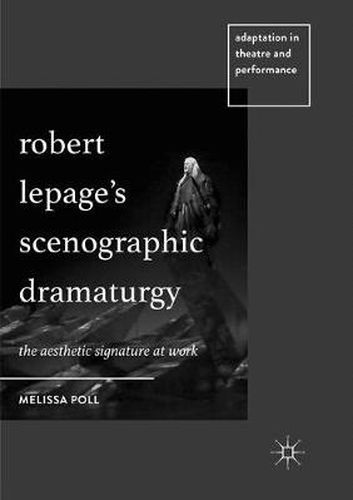Readings Newsletter
Become a Readings Member to make your shopping experience even easier.
Sign in or sign up for free!
You’re not far away from qualifying for FREE standard shipping within Australia
You’ve qualified for FREE standard shipping within Australia
The cart is loading…






This title is printed to order. This book may have been self-published. If so, we cannot guarantee the quality of the content. In the main most books will have gone through the editing process however some may not. We therefore suggest that you be aware of this before ordering this book. If in doubt check either the author or publisher’s details as we are unable to accept any returns unless they are faulty. Please contact us if you have any questions.
This book theorizes auteur Robert Lepage’s scenography-based approach to adapting canonical texts. Lepage’s technique is defined here as ‘scenographic dramaturgy’, a process and product that de-privileges dramatic text and relies instead on evocative, visual performance and intercultural collaboration to re-envision extant plays and operas. Following a detailed analysis of Lepage’s adaptive process and its place in the continuum of scenic writing and auteur theatre, this book features four case studies charting the role of Lepage’s scenographic dramaturgy in re-‘writing’ extant texts, including Shakespeare’s Tempest on Huron-Wendat territory, Stravinsky’s Nightingale in a twenty-seven ton pool, and Wagner’s Ring cycle via the infamous, sixteen-million-dollar Metropolitan Opera production. The final case study offers the first interrogation of Lepage’s twenty-first century ‘auto-adaptations’ of his own seminal texts, The Dragons’ Trilogy and Needles & Opium. Though aimed at academic readers, this book will also appeal to practitioners given its focus on performance-making, adaptation and intercultural collaboration.
$9.00 standard shipping within Australia
FREE standard shipping within Australia for orders over $100.00
Express & International shipping calculated at checkout
This title is printed to order. This book may have been self-published. If so, we cannot guarantee the quality of the content. In the main most books will have gone through the editing process however some may not. We therefore suggest that you be aware of this before ordering this book. If in doubt check either the author or publisher’s details as we are unable to accept any returns unless they are faulty. Please contact us if you have any questions.
This book theorizes auteur Robert Lepage’s scenography-based approach to adapting canonical texts. Lepage’s technique is defined here as ‘scenographic dramaturgy’, a process and product that de-privileges dramatic text and relies instead on evocative, visual performance and intercultural collaboration to re-envision extant plays and operas. Following a detailed analysis of Lepage’s adaptive process and its place in the continuum of scenic writing and auteur theatre, this book features four case studies charting the role of Lepage’s scenographic dramaturgy in re-‘writing’ extant texts, including Shakespeare’s Tempest on Huron-Wendat territory, Stravinsky’s Nightingale in a twenty-seven ton pool, and Wagner’s Ring cycle via the infamous, sixteen-million-dollar Metropolitan Opera production. The final case study offers the first interrogation of Lepage’s twenty-first century ‘auto-adaptations’ of his own seminal texts, The Dragons’ Trilogy and Needles & Opium. Though aimed at academic readers, this book will also appeal to practitioners given its focus on performance-making, adaptation and intercultural collaboration.